Filter by

The Legacy of Christopher Columbus in the Americas : New Nations and a Transa…
Why is the capital of the United States named in part after Christopher Columbus, a Genoese explorer commissioned by Spain who never set foot on what would become the nation's mainland? Why did Spanish American nationalists in 1819 name a new independent republic "Colombia," after Columbus, the first representative of the empire from which they had recently broken free? These are only two of th…
- Edition
- -
- ISBN/ISSN
- 9780826519535
- Collation
- 216 halaman
- Series Title
- -
- Call Number
- 900 BAR l

Czech Broadside Ballads as Text, Art, Song in Popular Culture, c.1600–1900
This landmark collection makes a major contribution to the burgeoning field of broadside ballad study by investigating the hitherto unexplored treasure-trove of over 100,000 Central/Eastern European broadside ballads of the Czech Republic, from the 16th to the 19th century. Viewing Czech broadside ballads from an interdisciplinary perspective, we see them as unique and regional cultural phenome…
- Edition
- Ed. 1
- ISBN/ISSN
- 9789463721554, 9789048553341
- Collation
- 500
- Series Title
- -
- Call Number
- 940 CZE c

Time and the Ancestors: Aztec and Mixtec Ritual Art
Time and the Ancestors: Aztec and Mixtec Ritual Art combines iconographical analysis with archaeological, historical and ethnographic studies and offers new interpretations of enigmatic masterpieces from ancient Mexico, focusing specifically on the symbols and values of the religious heritage of indigenous peoples.; Readership: Scholars and students working on the archaeology, art, history and …
- Edition
- Ed. 1
- ISBN/ISSN
- 9789004340510, 9789004340527
- Collation
- 648
- Series Title
- The Early Americas: History and Culture, 5
- Call Number
- 973.82 JAN t
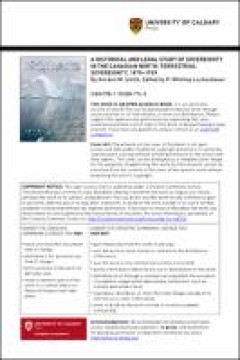
A Historical and Legal Study of Sovereignty in the Canadian North: Terrestria…
Gordon W. Smith, PhD, dedicated much of his life to researching Canada's sovereignty in the Arctic. A historian by training, his 1952 dissertation from Columbia University on "The Historical and Legal Background of Canada's Arctic Claims" remains a foundational work on the topic, as does his 1966 chapter "Sovereignty in the North: The Canadian Aspect of an International Problem," in R. St. J. M…
- Edition
- Ed. 1
- ISBN/ISSN
- 9781552387740, 9781552387740
- Collation
- 512
- Series Title
- Northern Lights
- Call Number
- 920 HIS h
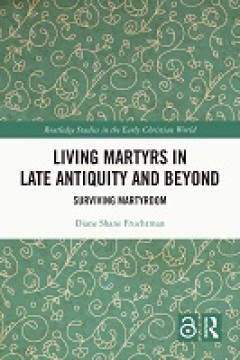
Living Martyrs in Late Antiquity and Beyond: Surviving Martyrdom
Antiquity; Living; Martyrdom; Martyrs; Surviving
- Edition
- Ed. 1
- ISBN/ISSN
- 9781032261065, 9781032263250
- Collation
- -
- Series Title
- -
- Call Number
- 930 FRU l
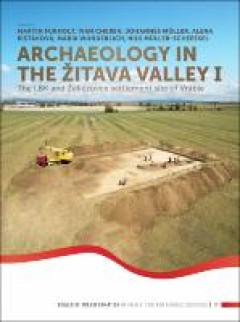
Archaeology in the Žitava valley I. The LBK and Želiezovce settlement site …
The early Neolithic site of Vráble (5250-4950 cal BCE) is among the largest LBK settlement agglomerations in Central Europe, and exceptional within the southwest Slovakian area. Geophysical surveys revealed more than 300 houses, grouped into three contemporary neighbourhoods, one of which is delineated by a complex ditched enclosure system. This enclosure is associated with a large number of h…
- Edition
- Ed. 1
- ISBN/ISSN
- 9789088908972, 9789088908989
- Collation
- 546
- Series Title
- Scales of Transformation, 9
- Call Number
- 930.1 ARC a

Isurium Brigantum: an archaeological survey of Roman Aldborough
Brings together in one volume for the very first time the results of a major re-examination of the site of the Roman town of Isurium Brigantum (Aldborough, in North Yorkshire), with recent geophysical surveys and a re-evaluation of earlier antiquarian work and archaeological fieldwork and excavations – some never before published. Provides historians and archaeologists with exciting new infor…
- Edition
- Ed. 1
- ISBN/ISSN
- -
- Collation
- 202
- Series Title
- Reports of the Research Committee of the Society of Antiquaries of London, LXXXI (81)
- Call Number
- 930.1 FER i
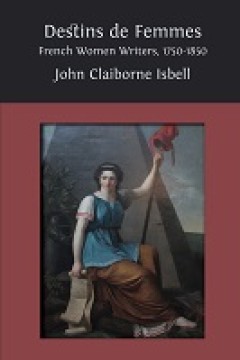
Destins de femmes: French Women Writers, 1750-1850
Destins de femmes is the first comprehensive overview of French women writers during the turbulent period of 1750-1850. John Isbell provides an essential collection that illuminates the impact women writers had on French literature and politics during a time marked by three revolutions, the influx of Romantic art, and rapid technological change. Each of the book’s thirty chapters introduces a…
- Edition
- Ed. 1
- ISBN/ISSN
- 9781805110323, 9781805110330
- Collation
- 202
- Series Title
- -
- Call Number
- 909 ISB d
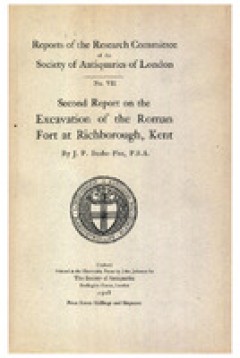
Second Report on the Excavations of the Roman Fort at Richborough, Kent
This is the second account of the excavations of the Roman fort at Richborough (Rutupiae), Kent, in southern England, which took place in 1924. Included are descriptions of artefacts such as pottery, coins, buildings and metalwork, together with an account of the methodology used to unearth these.
- Edition
- Ed. 1
- ISBN/ISSN
- -
- Collation
- 288
- Series Title
- Reports of the Research Committee of the Society of Antiquaries of London, VII
- Call Number
- 930.1 BUS s

Social Dynamics in the Northwest Frontiers of the Late Roman Empire: Beyond T…
This volume explores the final phase of the West Roman Empire, particularly the changing interactions between the imperial authority and external 'barbarian' groups in the northwest frontiers of the empire during the fourth and fifth centuries. The contributions present valuable overviews of recent archaeological research combined with innovative theoretical discussions. Key topics include the …
- Edition
- Ed. 1
- ISBN/ISSN
- 9789462983601, 9789048533954
- Collation
- 230
- Series Title
- Amsterdam Archaeological Studies, 26
- Call Number
- 930.1 SOC s
 Computer Science, Information & General Works
Computer Science, Information & General Works  Philosophy & Psychology
Philosophy & Psychology  Religion
Religion  Social Sciences
Social Sciences  Language
Language  Pure Science
Pure Science  Applied Sciences
Applied Sciences  Art & Recreation
Art & Recreation  Literature
Literature  History & Geography
History & Geography